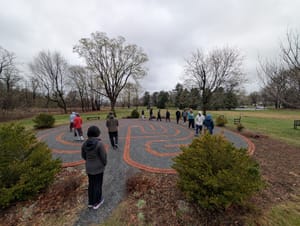If anyone doubted the power and importance of online social networks, the election of Barack Obama should have put that to rest.
Much has been made of the Obama campaign’s use of the internet as an organizing, fundraising and marketing tool. The core of that strategy was a social network, MyBarackObama.com, which probably now qualifies as the most successful social network startup ever. While Facebook boasts a dubious $15 billion valuation and MySpace can claim to be the most-trafficked site on the internet, MyBO, as its users called it, just helped win a presidential election.
It did that by bringing Obama supporters together, helping them share information and ideas, giving them an easy way to make phone calls (yes, phone banking is still a critical part of a modern campaign), and making sure they were plugged into the latest messaging from campaign headquarters. So while other social networks give their users a way to share music, post photos, give shout-outs to friends, keep an eye on classmates’ and coworkers’ activities, and organize parties, MyBO served as a central coordinating and organizing tool for a massive, collective political effort.
It’s the kind of purpose that the earliest pioneers of personal computing had in mind. But computing has never really achieved that kind of collective coordinating power until now.
In 1945, a young Navy radar technician named Douglas Engelbart looked at a radar screen and thought of something much more sophisticated. Instead of blips that represented enemy ships, he imagined a screen that showed words, pictures, symbols — representations of ideas — that could be manipulated by a person in front of the screen. By putting those symbols on a screen, Engelbart figured people could more easily communicate and test the ideas they represented, ultimately using them to understand the world better.
Engelbart went on to develop his ideas as a computer scientist at SRI, eventually coming up with a sophisticated interactive, collaborative computer system that was years ahead of its time. His famous “mother of all demos” on December 9, 1968 inspired a generation of computer scientists and debuted a wide array of innovations. Most famously, he (or his research team) invented the mouse. They also invented simultaneous onscreen editing (whiteboarding) by remote users, windowing, computer outlines, the hyperlink, version control, and context-sensitive help, among many other things.
The inventions were all in service of Engelbart’s grand vision: That computers could be used to facilitate human collaborative efforts, augmenting human intelligence and helping us to solve the world’s most pressing problems.
But after Engelbart’s impressive 1968 demo, the computer industry went elsewhere. Rather than using computers to augment human intelligence, the most brilliant computer scientists tended to focus on trying to create artificial intelligence. The market eventually picked up on many of Engelbart’s innovations, but used them for commercial ends: to satisfy the needs of business customers, or the desires of consumers. Few, if any, thought about how to use computers to facilitate and enhance collaborative problem solving on a large scale.
And then, almost by accident, social networking exploded onto the scene and, a few short years later, helped elect a president.
MyBO is just the first of what I expect will be many, many examples of how social networks online will start to enable collaborative problem solving in the real world.
These examples will multiply thanks to mobile technology and wireless networking.
As phones gain ever more sophisticated internet and social networking capabilities, they enable people to do their networking and collaboration wherever they are — in some cases even without consciously doing anything at all. For instance, Nokia is already experimenting with building traffic sensor networks using people’s phones. All participants need to do is install an application on a GPS-enabled phone, and their phone transmits data back to a central location without any effort on the user’s part. As the network grows and is able to make more accurate pictures of real-time traffic conditions, participants will also be able to use their phones to check the traffic, avoiding the most congested roadways when necessary — injecting an element of intelligence and reflexivity into the traffic flows. And that should all be possible with very minimal effort on the part of the people using it.
Traffic is just the first example; others will surely follow. In short, mobile devices combined with well-designed social networks will soon give people far more information, and the ability to make far better choices, than ever before.
And not a moment too soon: Given the scale of the problems the world now faces — global warming, a worldwide financial crisis, looming problems with the production and distribution of food and water, malaria in the third world, hurricanes, terrorism — such tools may come in very handy indeed.


